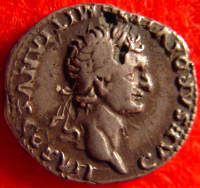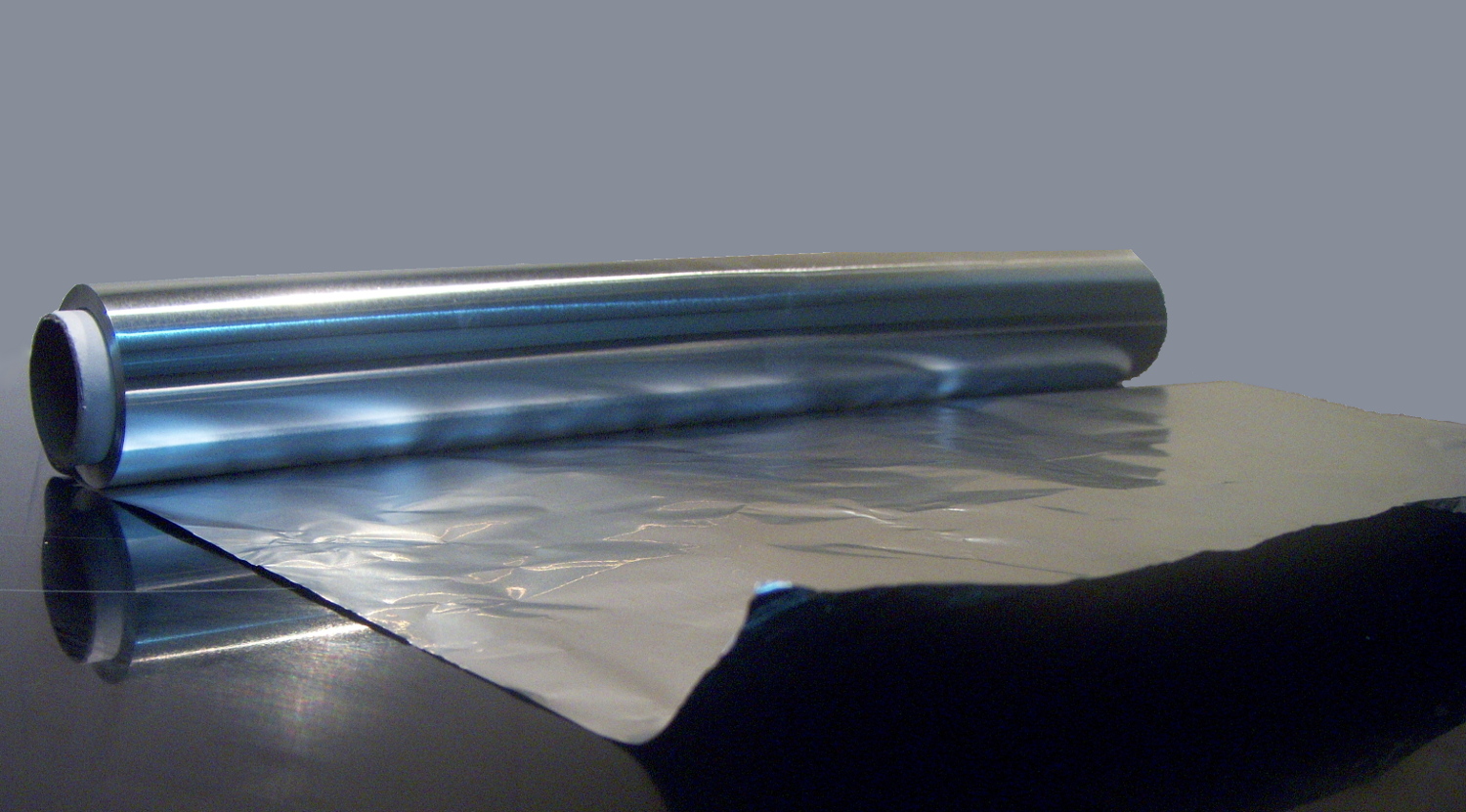|
Cliché Forgery
A cliché coin forgery is a type of counterfeit coin (a subtype of fourrée) produced using a genuine coin to impress a design into silver foil. Evidence of the probable manufacturing technique are finds of small lead sheets with multiple coin impressions and also fragments of impressed foils or complete 'coins'. The process seems to have involved the following steps. First, sandwiching a genuine coin between a fold of foil, generally silver, with a thickness of 50-100 microns. This was then placed between lead sheets (or a folded sheet) and the pile struck with a hammer. This resulted in the foils taking an impression of each face of the coin simultaeously, also incidentally transferred to the lead sheets (in incuse). The folded foil (retaining the coin impressions in register) was then removed and the resulting obverse and reverse impressions were then simply soldered together, usually with tin-lead solder. The final sandwich was then trimmed to size, possibly with a 'pastry cutter ... [...More Info...] [...Related Items...] OR: [Wikipedia] [Google] [Baidu] |
Coin Counterfeiting
Coin counterfeiting of valuable antique coins is common; modern high-value coins are also counterfeited and circulated.Coin Counterfeiting , Counterfeit Coins (2007-26-09) Counterfeit antique coins are generally made to a very high standard so that they can deceive experts. This is not easy and many coins still stand out. History Counterfeits of higher-value coins in circulation, designed for general circulation at face value, have been made by criminals for thousands of years.Circulating coins For modern coins in general circulation, the most common method of protection from forgeries is the use of bi-metallic coins made of two |
Fourrée
A fourrée is a coin, most often a counterfeit, that is made from a base metal core that has been plated with a precious metal to look like its solid metal counterpart; the term is derived from the French for "stuffed". The term is normally applied to ancient silver-plated coins such as the Roman denarius and Greek drachma, but the term is also applied to other plated coins. Cicero mentions that M. Marius Gratidianus, a praetor during the 80s BC, was widely praised for developing tests to detect false coins, and removing them from circulation. Gratidianus was killed under Sulla, who introduced his own anti-forgery law (''lex Cornelia de falsis''), that reintroduced serrated edges on precious metal coins, an anticounterfeiting measure that had been tried earlier. Serrated denarii, or ''serrati'', which featured about 20 notched chisel marks on the edge of the coin, were produced to demonstrate the integrity of the coin. This effort was in vain, as examples of ''fourrée serrati'' ... [...More Info...] [...Related Items...] OR: [Wikipedia] [Google] [Baidu] |
Foil (metal)
A foil is a very thin sheet of metal, typically made by hammering or rolling. Foils are most easily made with malleable metal, such as aluminium, copper, tin, and gold. Foils usually bend under their own weight and can be torn easily. For example, aluminium foil is usually about , whereas gold (more malleable than aluminium) can be made into foil only a few atoms Atoms are the basic particles of the chemical elements. An atom consists of a nucleus of protons and generally neutrons, surrounded by an electromagnetically bound swarm of electrons. The chemical elements are distinguished from each other ... thick, called gold leaf. Extremely thin foil is called metal leaf. Leaf tears very easily and must be picked up with special brushes. See also * Aluminium foil * Copper foil * Tin foil * Gold leaf * Metal leaf References Metalworking {{Metalworking-stub ... [...More Info...] [...Related Items...] OR: [Wikipedia] [Google] [Baidu] |
Microns
The micrometre (English in the Commonwealth of Nations, Commonwealth English as used by the International Bureau of Weights and Measures; SI symbol: μm) or micrometer (American English), also commonly known by the non-SI term micron, is a unit of length in the International System of Units (SI) equalling (SI standard prefix "micro-" = ); that is, one millionth of a metre (or one thousandth of a millimetre, , or about ). The nearest smaller common SI Unit, SI unit is the nanometre, equivalent to one thousandth of a micrometre, one millionth of a millimetre or one billionth of a metre (). The micrometre is a common unit of measurement for wavelengths of infrared radiation as well as sizes of biological cell (biology), cells and bacteria, and for grading wool by the diameter of the fibres. The width of a single human hair ranges from approximately 20 to . Examples Between 1 μm and 10 μm: * 1–10 μm – length of a typical bacterium * 3–8 μm – width of str ... [...More Info...] [...Related Items...] OR: [Wikipedia] [Google] [Baidu] |
Incuse
This glossary of numismatics is a list of definitions of terms and concepts relevant to numismatics and coin collecting, as well as sub-fields and related disciplines, with concise explanations for the beginner or professional. Numismatics (ancient Greek: , meaning "monetary") is the scientific study of money and its history in all its varied forms. While numismatists are often characterized as studying coins, the discipline also includes the study of other types of money, such as banknotes, stock certificates, medals, medallions, and tokens (also referred to as exonumia). Sub-fields and related fields of numismatics include: * Exonumia, the study of coin-like objects such as token coins and medals, and other items used in place of legal currency or for commemoration. * Notaphily, the study of paper money or banknotes. * Philately, the study of postage stamps. * Scripophily, the study and collection of company share certificates and bonds. A ... [...More Info...] [...Related Items...] OR: [Wikipedia] [Google] [Baidu] |
Obverse And Reverse
The obverse and reverse are the two flat faces of coins and some other two-sided objects, including paper money, flags, seals, medals, drawings, old master prints and other works of art, and printed fabrics. In this usage, ''obverse'' means the front face of the object and ''reverse'' means the back face. The obverse of a coin is commonly called ''heads'', because it often depicts the head of a prominent person, and the reverse ''tails''. In numismatics, the abbreviation ''obv.'' is used for ''obverse'',David Sear. ''Greek Imperial Coins and Their Values.'' Spink Books, 1982. p. xxxv. while , )(Jonathan Edwards. ''Catalogue of the Greek and Roman Coins in the Numismatic Collection of Yale College, Volume 2.'' Tuttle, Morehouse & Taylor, 1880. p. 228. and ''rev.''Allen G. Berman. ''Warman's Coins And Paper Money: Identification and Price Guide.'' Penguin, 2008. are used for ''reverse''. Vexillologists use the symbols "normal" for the obverse and "reverse" for the reverse ... [...More Info...] [...Related Items...] OR: [Wikipedia] [Google] [Baidu] |
Scanning Electron Microscope
A scanning electron microscope (SEM) is a type of electron microscope that produces images of a sample by scanning the surface with a focused beam of electrons. The electrons interact with atoms in the sample, producing various signals that contain information about the surface topography and composition. The electron beam is scanned in a raster scan pattern, and the position of the beam is combined with the intensity of the detected signal to produce an image. In the most common SEM mode, secondary electrons emitted by atoms excited by the electron beam are detected using a secondary electron detector ( Everhart–Thornley detector). The number of secondary electrons that can be detected, and thus the signal intensity, depends, among other things, on specimen topography. Some SEMs can achieve resolutions better than 1 nanometer. Specimens are observed in high vacuum in a conventional SEM, or in low vacuum or wet conditions in a variable pressure or environmental SEM, an ... [...More Info...] [...Related Items...] OR: [Wikipedia] [Google] [Baidu] |
Classical Antiquity
Classical antiquity, also known as the classical era, classical period, classical age, or simply antiquity, is the period of cultural History of Europe, European history between the 8th century BC and the 5th century AD comprising the interwoven civilizations of ancient Greece and ancient Rome, Rome known together as the Greco-Roman world, centered on the Mediterranean Basin. It is the period during which ancient Greece and Rome flourished and had major influence throughout much of Europe, North Africa, and West Asia. Classical antiquity was succeeded by the period now known as late antiquity. Conventionally, it is often considered to begin with the earliest recorded Homeric Greek, Epic Greek poetry of Homer (8th–7th centuries BC) and end with the fall of the Western Roman Empire in 476 AD. Such a wide span of history and territory covers many disparate cultures and periods. ''Classical antiquity'' may also refer to an idealized vision among later people of what was, in Ed ... [...More Info...] [...Related Items...] OR: [Wikipedia] [Google] [Baidu] |
Middle Ages
In the history of Europe, the Middle Ages or medieval period lasted approximately from the 5th to the late 15th centuries, similarly to the post-classical period of global history. It began with the fall of the Western Roman Empire and transitioned into the Renaissance and the Age of Discovery. The Middle Ages is the middle period of the three traditional divisions of Western history: classical antiquity, the medieval period, and the modern period. The medieval period is itself subdivided into the Early, High, and Late Middle Ages. Population decline, counterurbanisation, the collapse of centralised authority, invasions, and mass migrations of tribes, which had begun in late antiquity, continued into the Early Middle Ages. The large-scale movements of the Migration Period, including various Germanic peoples, formed new kingdoms in what remained of the Western Roman Empire. In the 7th century, North Africa and the Middle East—once part of the Byzantine Empire� ... [...More Info...] [...Related Items...] OR: [Wikipedia] [Google] [Baidu] |
Coin Clipping
A coin is a small object, usually round and flat, used primarily as a medium of exchange or legal tender. They are standardized in weight, and produced in large quantities at a mint in order to facilitate trade. They are most often issued by a government. Coins often have images, numerals, or text on them. The faces of coins or medals are sometimes called the ''obverse'' and the ''reverse'', referring to the front and back sides, respectively. The obverse of a coin is commonly called ''heads'', because it often depicts the head of a prominent person, and the reverse is known as ''tails''. The first metal coins – invented in the ancient Greek world and disseminated during the Hellenistic period – were precious metal–based, and were invented in order to simplify and regularize the task of measuring and weighing bullion (bulk metal) carried around for the purpose of transactions. They carried their value within the coins themselves, but the stampings also induced manipulat ... [...More Info...] [...Related Items...] OR: [Wikipedia] [Google] [Baidu] |
Stereotype (printing)
In printing, a stereotype, stereoplate or simply a stereo, is a solid plate of type metal, cast from a papier-mâché or plaster mould taken from the surface of a forme (printing), forme of type. The mould was known as a ''flong''. Background In the days of set movable sort (typesetting), type, printing involved placing individual letters (also called “sort”) plus other elements (including leading and furniture (typesetting), furniture) into a block called a chase (printing), chase. Cumulatively, this full setup for printing a single page was called a forme (printing), forme. Ink was then applied to the forme, pressed against paper and a printed page was made. This process of creating formes was labour-intensive, costly and prevented printers from using their type, leading, furniture and chases for other work. Furthermore, printers who underestimated demand would be forced to reset the type for subsequent print runs. ... while Nathaniel Hawthorne's publishers assumed that ' ... [...More Info...] [...Related Items...] OR: [Wikipedia] [Google] [Baidu] |








